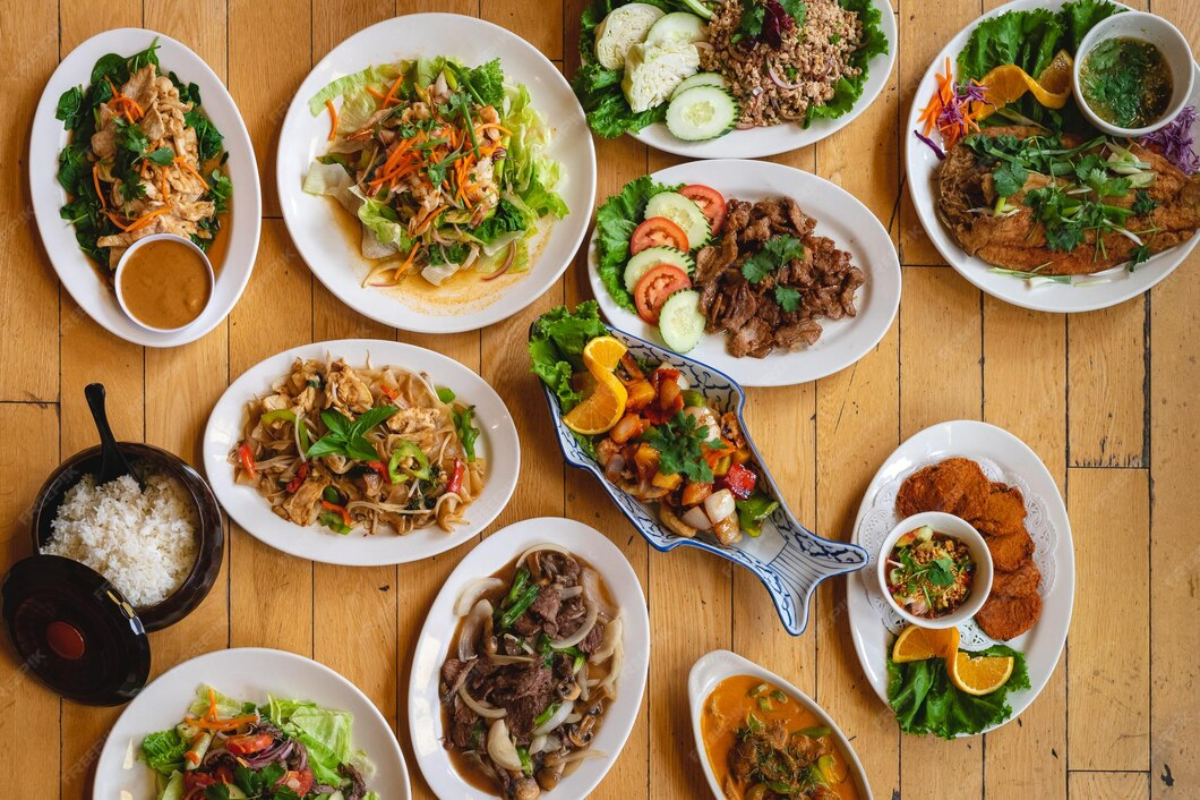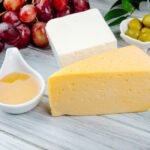Cambodian food is a vibrant mix of flavors, textures, and traditions. It reflects centuries of cultural exchange, drawing from the country’s history, geography, and rich farmlands. Known for its balance between sweet, salty, sour, and bitter notes, Cambodian cuisine blends fresh herbs, rice, and spices into dishes that are both comforting and full of depth. Whether enjoyed in a family home, at a bustling street market, or during a festive celebration, Cambodian food offers an unforgettable culinary journey.
The Heart of Cambodian Cuisine
Cambodian cuisine has evolved over centuries, influenced by neighboring countries such as Thailand, Vietnam, and Laos, as well as historical connections to China, India, and France. Despite these influences, it has developed its own identity through distinctive flavor combinations and cooking methods.
Rice sits at the core of Cambodian meals. It is more than just a staple—it is a symbol of life and prosperity. Almost every dish pairs with rice, from fragrant jasmine varieties to sticky rice used in desserts. Freshwater fish from the Tonle Sap and Mekong River also play a key role, shaping many traditional recipes.
Fresh herbs and spices are essential in Cambodian food. Lemongrass, kaffir lime leaves, galangal, turmeric, and basil are used to bring aroma and complexity to dishes. Spices are often balanced with sweet palm sugar, tangy tamarind, or fermented sauces like prahok, a pungent fish paste that is a defining element of the national cuisine.
Signature Cambodian Dishes You Should Know
While Cambodian food covers a wide range of flavors and textures, certain dishes stand out as cultural icons.
Amok Trey (Fish Amok)
Often called the national dish of Cambodia, Amok Trey is a silky fish curry steamed in banana leaves. It combines freshwater fish with coconut milk, eggs, and kroeung—a spice paste made from lemongrass, galangal, turmeric, and kaffir lime leaves. The steaming method gives the dish a custard-like texture, while the banana leaf infuses it with a gentle, earthy aroma. Amok Trey is both mild and aromatic, making it a favorite for visitors and locals alike.
Nom Banh Chok (Khmer Noodles)
Nom Banh Chok is a breakfast staple often sold by street vendors in the early morning. Rice noodles are topped with a fragrant green curry made from lemongrass, turmeric root, and fish, then garnished with fresh herbs and vegetables. It is a dish that celebrates freshness and is usually eaten in a communal setting, reflecting the social side of Cambodian food culture.
Samlor Korkor (Traditional Soup)
Samlor Korkor is one of Cambodia’s oldest recipes. Originally a rural farmers’ dish, it uses seasonal vegetables, leafy greens, and fish or pork. A distinctive feature is the roasted ground rice added to the broth, giving it a slightly nutty flavor. This soup is often enjoyed year-round and adapts to whatever ingredients are in season, making it a true reflection of Cambodia’s agricultural lifestyle.
Everyday Ingredients in Cambodian Cooking
The foundation of Cambodian food lies in its ingredients. Freshness is key, and most meals rely on produce gathered daily from markets.
Common herbs include lemongrass, holy basil, cilantro, and mint. They are used generously, not only as garnishes but as core components of flavor. Spices like turmeric, star anise, and cinnamon appear in stews and curries, often alongside prahok for depth and umami.
Fish sauce, oyster sauce, and soy sauce are common seasonings, while palm sugar balances savory and sour notes. Tamarind and lime add acidity, cutting through richness.
Cambodia’s tropical climate supports a variety of seasonal fruits and vegetables. Mangoes, papayas, and jackfruits are plentiful, as are leafy greens like water spinach and morning glory. These ingredients keep the cuisine fresh, vibrant, and healthy.
Street Food Culture in Cambodia
Street food is an essential part of life in Cambodia. It is where tradition meets accessibility, offering locals and visitors a chance to enjoy authentic flavors at an affordable price.
Popular snacks include grilled skewers of marinated meat, deep-fried spring rolls, and kuy teav, a rice noodle soup often eaten for breakfast. Vendors also sell fried insects, such as crickets and tarantulas—a reminder of Cambodia’s resourceful approach to food during difficult historical periods.
The atmosphere of Cambodian street markets is lively and colorful. Stalls are often set up in rows, with sizzling woks, steaming pots, and piles of fresh produce on display. Eating here is a sensory experience, with the sounds of chopping, the smell of herbs, and the sight of vibrant dishes being prepared right in front of you.
Cambodian Desserts and Sweet Treats
Cambodian desserts are as diverse as the savory dishes, often using rice, coconut milk, and palm sugar as main ingredients.
One classic is num ansom chek, a banana wrapped in sticky rice and steamed in banana leaves. The combination of soft banana and chewy rice creates a comforting, sweet flavor. Another favorite is pumpkin custard, where coconut milk and eggs are baked inside a hollowed pumpkin.
Other treats include sweet mung bean puddings, palm sugar cakes, and shaved ice topped with condensed milk and tropical fruits. These desserts are often enjoyed during festivals or special family gatherings.
Dining Customs and Food Etiquette in Cambodia
Meals in Cambodia are usually served family-style, with several dishes placed in the center of the table for everyone to share. This reflects the communal values of Cambodian society, where eating together strengthens bonds.
Rice is always served first, followed by dishes that balance flavors—one sour, one sweet, one savory. Soup is often present, eaten alongside rice rather than as a separate course.
When eating, it is polite to take small portions and avoid finishing the entire serving dish, which shows respect for others at the table. Chopsticks are used for noodles, while spoons and forks are common for rice dishes.
Where to Experience Authentic Cambodian Food?
For the most authentic Cambodian food, local markets are the best starting point. Places like Phnom Penh’s Central Market or Siem Reap’s Old Market are filled with vendors selling fresh produce, street snacks, and cooked meals.
Home kitchens also play a huge role in preserving traditional recipes, with families passing down cooking techniques through generations.
Restaurants, especially in tourist areas, offer both modern and traditional takes on Cambodian dishes. Many also serve special menus during festivals such as Khmer New Year and Pchum Ben, where food offerings are an important cultural practice.
Conclusion
Cambodian food is more than just a collection of recipes—it is a reflection of history, geography, and community values. From the gentle aroma of Amok Trey to the vibrant freshness of Nom Banh Chok, each dish tells a story of tradition and resilience. The cuisine’s balance of flavors, reliance on fresh ingredients, and emphasis on communal eating make it a unique and rewarding experience for anyone willing to explore. Whether in a bustling market or a family kitchen, Cambodian food offers a taste of the country’s soul.
FAQs
1. What is the national dish of Cambodia?
The national dish is often considered to be Amok Trey, a steamed fish curry with coconut milk and spices, served in banana leaves.
2. How spicy is Cambodian food compared to Thai food?
Cambodian food is generally less spicy than Thai cuisine. While chili is used, the focus is more on balancing sweet, sour, salty, and bitter flavors.
3. What are the most common ingredients in Cambodian cooking?
Key ingredients include rice, freshwater fish, lemongrass, galangal, kaffir lime leaves, turmeric, prahok (fermented fish paste), palm sugar, and a variety of fresh herbs.
4. Is Cambodian street food safe for tourists to eat?
Street food is generally safe if purchased from busy vendors with high turnover. Choosing freshly cooked dishes and avoiding raw, unrefrigerated items is recommended.
My name is Mustafa, and I have been blogging for over 5 years. I am passionate about sharing complete, accurate, and helpful information with my readers. Along with managing content on The Matcha Read, I also contribute blog posts to premium websites. My goal is to provide valuable insights in a clear and easy-to-understand way, so every reader walks away with useful knowledge.










